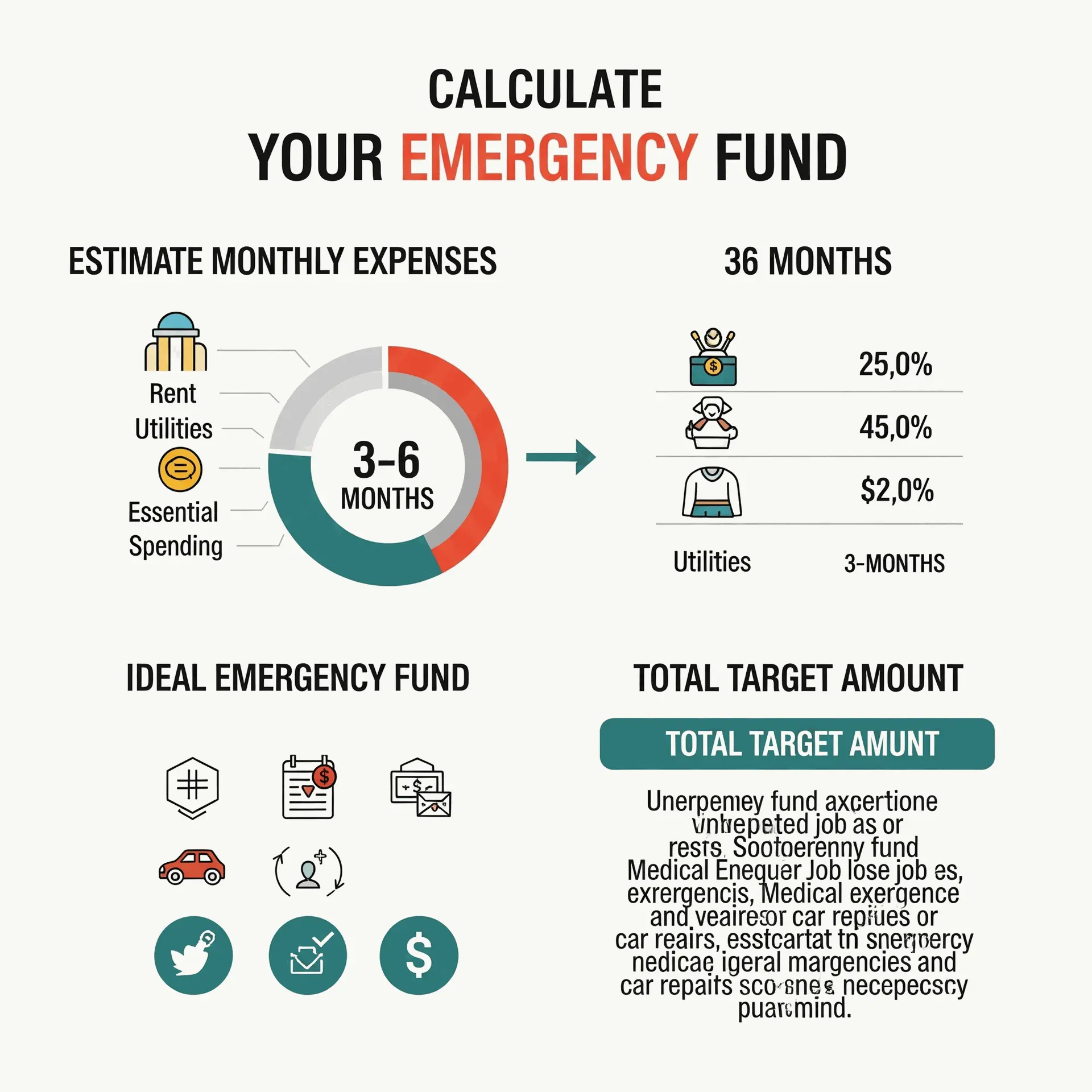7 Essential Steps to Build Your Emergency Fund for Financial Freedom
Financial surprises can hit like an unexpected monsoon, leaving you scrambling to cover sudden expenses like medical bills, job loss, or urgent repairs. Without a safety net, these moments can derail your dreams and plunge you into debt. That’s where an emergency fund comes in—a financial cushion that ensures you’re prepared for life’s curveballs. In this guide, you’ll learn what an emergency fund is, why it’s a cornerstone of financial stability, and seven actionable steps to build one, even if you’re starting from scratch. Whether you’re a young professional or just beginning your financial journey, this post will empower you to create a fund that protects your peace of mind.
What is an Emergency Fund?
An emergency fund is money set aside specifically for unexpected, unavoidable expenses. Think of it as a lifeboat on your financial ship—ready to keep you afloat when storms hit. Unlike your regular savings or investment accounts, this fund is reserved for true emergencies, like sudden unemployment, medical emergencies, or urgent home repairs. It’s not for planned expenses like vacations or new gadgets. The goal? Instant access to cash when you need it most, without dipping into investments or taking on debt.
Imagine Priya, a 25-year-old graphic designer. When her laptop crashed unexpectedly, her emergency fund covered the repair costs, saving her from taking a high-interest loan. That’s the power of being prepared.
Why Understanding Your Emergency Fund is Crucial for Financial Success
An emergency fund isn’t just extra cash—it’s your financial lifeline. Without it, unexpected expenses can force you to rely on credit cards or loans, trapping you in a cycle of debt. According to a 2023 survey by the Reserve Bank of India, over 40% of Indian households faced financial stress due to unplanned expenses. An emergency fund shields you from this, offering peace of mind and stability.
For example, consider Arjun, a 28-year-old IT professional. When he lost his job unexpectedly, his six-month emergency fund covered his rent, utilities, and groceries while he searched for new opportunities. This buffer allowed him to focus on finding the right job, not just any job. An emergency fund gives you the freedom to navigate life’s uncertainties without sacrificing your financial goals.
5 Key Principles for Building an Emergency Fund
Creating an emergency fund requires strategy and discipline. Here are five core principles to guide you:
1. Aim for 6–12 Months of Expenses
Your emergency fund should cover 6–12 months of essential expenses—rent, utilities, groceries, and loan payments. For instance, if your monthly expenses are ₹15,000, aim for ₹90,000–₹1,80,000. This range ensures you’re covered for extended emergencies, like job loss or medical recovery.
2. Prioritize Liquidity
Your emergency fund must be easily accessible. Avoid locking it in fixed deposits (FDs) with penalties or investments like stocks, which fluctuate. Instead, opt for savings accounts or liquid mutual funds, which offer quick access and modest returns.
3. Separate Your Fund
Keep your emergency fund in a dedicated account, separate from your regular savings or salary account. This prevents accidental spending. For example, set up a second savings account labeled “Emergency Fund” to mentally reinforce its purpose.
4. Start Small, But Start Now
Even if you can only save ₹500 a month, start today. Small, consistent contributions add up. For a ₹90,000 fund, saving ₹5,000 monthly takes 18 months—achievable with discipline.
5. Automate Your Savings
Set up an automatic transfer to your emergency fund account each month. This removes temptation and ensures steady progress. Think of it like paying a bill—to your future self.
How to Effectively Build Your Emergency Fund: Your Action Plan
Ready to start? Follow this step-by-step plan to build your emergency fund:
- Calculate Your Monthly Expenses: List essentials—rent, utilities, groceries, loan EMIs. Exclude discretionary spending like dining out or shopping. For example, if your essentials total ₹15,000, your six-month goal is ₹90,000.
- Set a Realistic Savings Target: Commit to saving a fixed amount monthly, even if it’s small. If ₹5,000 is doable, automate this transfer right after your salary arrives.
- Cut Non-Essential Spending: Review your budget. Can you skip daily coffee runs or reduce online shopping? Redirect these savings to your fund.
- Use Windfalls Wisely: Bonuses, tax refunds, or gifts should go straight to your emergency fund. A ₹20,000 bonus can jumpstart your savings.
- Choose the Right Account: Opt for a high-interest savings account or liquid mutual fund. Liquid funds, like those offering 5–6% returns, are ideal for accessibility and growth.
- Pause Investments Temporarily: If your budget is tight, divert investment contributions to your emergency fund until it’s fully built.
- Track and Celebrate Progress: Check your fund monthly. Celebrate milestones, like reaching ₹25,000, to stay motivated.

Common Mistakes to Avoid When Building Your Emergency Fund
Even with the best intentions, pitfalls can derail your efforts. Here’s what to watch out for:
- Not Separating the Fund: Mixing emergency savings with regular spending accounts leads to temptation. Solution: Open a dedicated account and label it clearly.
- Investing in Risky Assets: Stocks or crypto are volatile and illiquid—not suitable for emergency funds. Solution: Stick to savings accounts or liquid mutual funds for safety and access.
- Ignoring Small Contributions: Thinking “₹500 won’t make a difference” delays progress. Solution: Every rupee counts—start small and stay consistent.
Final Thoughts
An emergency fund is your first step toward financial freedom, offering a buffer against life’s unpredictability. By following these seven steps—calculating expenses, saving consistently, and choosing liquid accounts—you can build a safety net that protects your dreams. Start today, even if it’s with ₹500. Your future self will thank you.
What’s one expense you can cut this month to kickstart your emergency fund? Share your thoughts in the comments or take the first step by setting up a dedicated savings account today!
Blog by Santu Das
Personal Finance Expert and Financial Educator